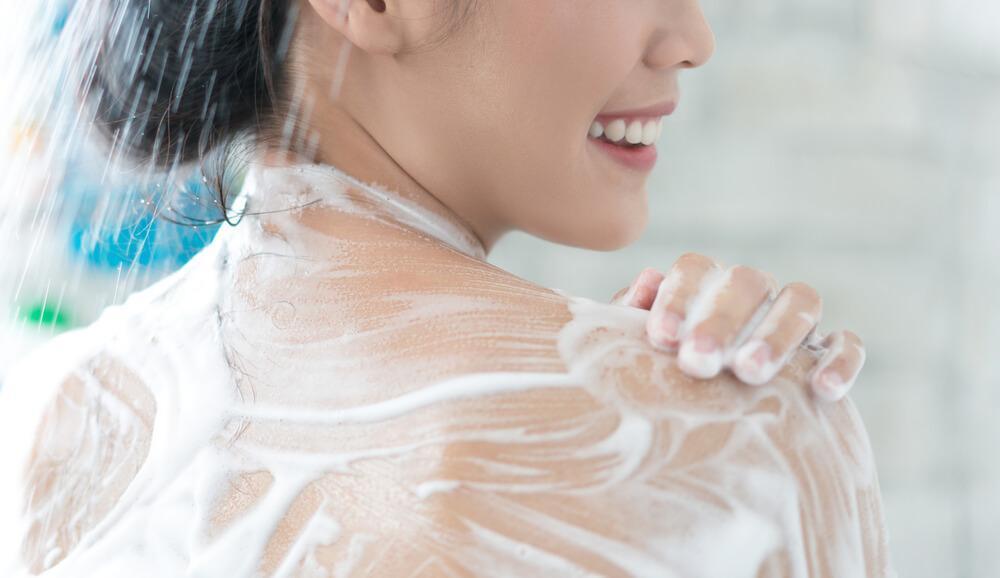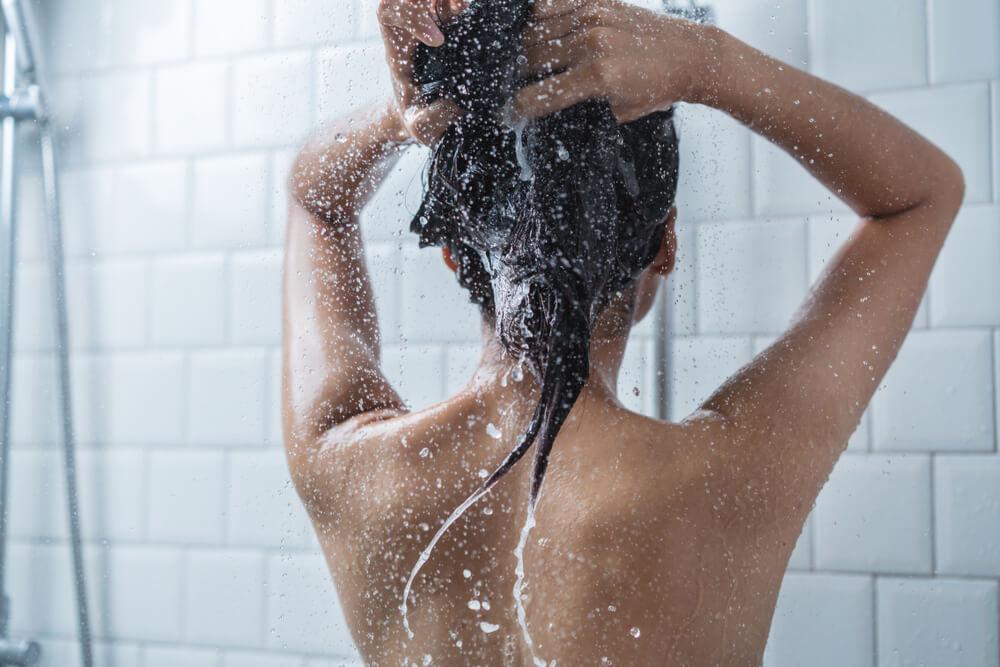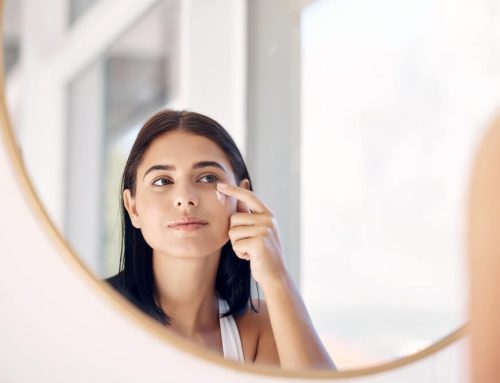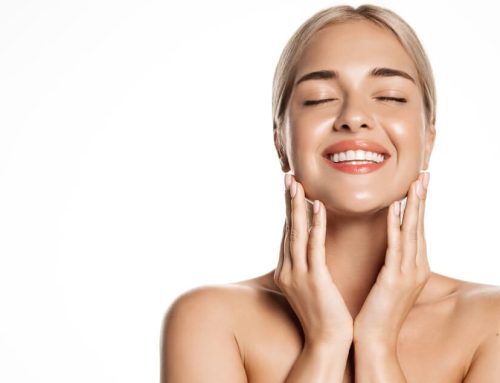Back acne, which also goes by the trendy name bacne, can be a real bummer. For starters, it’s hard to know if you have it, and even after you spot the zits, reaching them is a total pain in your joints. Whether the condition manifests as a breakout of blackheads, whiteheads, or pimples, getting rid of the acne is the only sure way of avoiding unsightly scars and spots all over your back.
If not handled right, these blemishes will actually spread to other parts of your body, hence the need to learn how to treat and prevent back acne for good. Notably, recommended treatments will not do you much good if you don’t take care of the causes and habits that could be making you more susceptible. While at it, prevention of back acne is key. We have covered all this and more below.
What is Back Acne?
Back acne is a term used to describe acne that appears on the back, the kind that you feel but can’t see. Just like facial acne, bacne is a skin condition which results from clogging of hair follicles with dead skin cells and sebum (oily or waxy matter).
It affects the skin with a high number of sebum producing glands, which, unfortunately, includes the back. Back acne can manifest as different types of blemishes on your skin, including;
Whiteheads and Blackheads: Mild form of acne formed by clogged pores in which pus accumulates underneath the skin (whitehead) or is exposed to air (blackheads). They are painless small round bumps that can appear on the back, face, arms, nose, chest or arms.
Pustules: Small to large white bumps surrounded by reddish skin. They contain pus and usually form in clusters. Pustules are common among young adults and teenagers. This is a moderate type of acne and usually comes with inflammation.
Papules: Infected blocked pores. Papules are usually large and if popped, they can become crusty. They manifest as pink bumps that sometimes cluster into a rash. If left untreated, papules can develop into cysts (hard pus-filled lesions)- a severe type of acne.
What Causes Back Acne?
Before you head to a pharmacy asking for back acne medication, knowing the causes behind the condition can help in choosing the right remedy. Among the factors that lead to acne formation on your back include;
- Exercise
You may have noticed that after a long workout, bacne forms. Why is this? See, exercise comes with friction and heat, the very factors that irritate your skin. What follows is inflammation of hair follicles, which trap oil, leading to acne.
Sweating, another effect of exercise, can also cause acne. If your clothes do not wick moisture fast enough, or its overly humid, sweat will clog your pores. Sweat-induced acne is usually seen in summer and among athletes who are training or competing.
- Medications
Some medications come with side effects which include acne development. If your back acne has developed soon after the start of medication, the culprit could be; anticonvulsants, barbiturates, steroids, antidepressants, anti-aging hormone supplements, and antidepressants, just to name a few.
- Hormonal Fluctuations
Bacne that develops during puberty, pregnancy, menstruation or during the course of hormonal treatments can be directly linked to hormonal fluctuations. Typically, an increase in sex hormone (androgens) levels in the body stimulates sebaceous glands to produce more skin oil leading to acne breakout.
- Stress
Although the connection between stress and acne has not been studied conclusively, one thing is certain, if you are stressed, your acne will flare up. For example, when picking at your skin due to stress, your sebaceous glands produce more oil- giving you more pimples to pick at. The production of cortisol, the stress hormone is also linked to acne breakouts.
- Genetics
Yes, apart from determining your looks, genes also contribute to susceptibility to diseases- including skin conditions. If your parents suffer from back acne, chances are you will too. The reason behind this is that genetics is a factor in skin sensitivity and skin type (dry or oily).
- Bad Hygiene
How good is your personal hygiene? If you go on days without taking a shower, changing clothes or washing your bedding, you could be looking at a serious case of back acne; acne-causing bacteria thrives in the mixture of sweat, shed skin flakes, oil and dirt that covers your body.
Can Food Cause Back Acne?
According to Whitney P. Bowe MD, the lead author of “Diet and Acne”, an article published in the Journal of the American Academy of Dermatology, certain carbohydrate-rich foods can cause acne. The foods are high-glycemic load foods such as white bread, white potatoes, corn, and chips.
These are foods which increase blood sugar levels, which in turn leads to increased production of skin oil. High amounts of food preservatives and additives can also trigger acne as well as dairy products such as milk.
How to Prevent Back Acne
Prevention of back acne hinges on proper self-care and avoiding factors that trigger or aggravate acne. To maintain flawless skin, here are the things that you need to observe in your everyday routine:
- Shower After Exercise
Leaving the gym all sweaty with tight clothes clinging onto your body increases the chances of acne formation. To enjoy the full benefits of cardiovascular exercises without the risk of back acne, always shower with warm water immediately after working out.
For this to work, use body washes with pH-balancing abilities or cleansers that are known to rid off bacteria: Products such as salicylic acid and benzoyl peroxide-infused cleansers come to mind. Sulfur-based soaps will also do the trick.
Showering and putting on dirty clothes is a redundant effort in prevention of back acne. The same applies to sleeping on dirty bedding. Always wear clean clothes and wash your sheets weekly.
As a matter of fact, anything that comes into contact with your skin should be kept clean including, towels and bras. Also, use laundry detergents without fragrances since such ingredients might irritate and inflame your skin, leading to an acne breakout.
2. Exfoliate Gently
Exfoliation helps in hastening cell turnover and unblocking of pores. To prevent bacne, exfoliate at least twice a week. Go for gentle exfoliating scrubs infused with salicylic acid, an ingredient that helps in breaking down pimples.
Your back is not as delicate as your face, hence exfoliating should not be unpleasant even for newbies; that said, avoid coarse scrubs, vigorous scrubbing, and rough exfoliating cloths- all which could irritate your skin.
3. Use Medicated Creams and Sprays
Opt for medicated products in your normal skincare routine. Creams or lotions with benzoyl peroxide and salicylic acid are particularly recommended for acne prone skin. For those hard to reach areas on your back, use medicated sprays.
Caution though, medicated products, especially ones infused with benzoyl peroxide, can stain your clothes- let the product dry or dab off the excess before putting on your clothes.
4. Choose Sunscreen Carefully
Wearing sunscreen is an important aspect of skin care. With back acne though, you should choose your brand carefully. Go for a non-greasy sunscreen. As such, your back will be protected from harmful UV rays and at the same time, your pores won’t be blocked.
5. Mind your Choice of Clothes
Tight-fitting clothes like spandex and sports bras won’t let your skin breathe, leading to accumulation of oil and blocking of pores. To be on the safer side, wear breathable cotton clothing during your workouts and when the temperatures are soaring.
Cotton has excellent moisture-wicking properties which ensure that sweat doesn’t accumulate on your back. Also, whenever possible, wear clothes that fit loosely.
6. Clean Off Hair Products
If you have long hair, products could be ending on your back, leading to irritation and acne outbreaks. Among the hair products that could be clogging your pores include shampoos and conditioners.
Wash your hair regularly to remove excess products that may otherwise run to your back. Additionally, wear your hair in a ponytail or bun to keep it off your back, especially when it’s hot and sweat from your head could be mixing with products.
Treatments for Back Acne
Acne can be persistent nevertheless, it is curable. With the right oral and topical medication, your skin can be smooth and flawless again.
1) Pills
- Antibiotics
Your doctor can prescribe antibiotics meant to kill Cutibacterium acnes, acne-causing bacteria. Antibiotics are also known to reduce inflammation on the skin, which helps in reducing the severity and spread of acne.
Common OTC antibiotic pills include erythromycin and metronidazole. Since bacteria have the ability to develop resistance against certain antibiotics, expect your doctor to prescribe a combination therapy for bacne.
- Hormone Inhibitors
Medication which reduces the production of androgen hormones is usually prescribed for acne that can be traced back to hormonal fluctuations. Antiandrogens come as combined oral contraceptive pills or stand-alone pills such as spironolactone, a medication used to prevent fluid build up.
- Oral Retinoids
Retinoids are medications known to reduce sebum production and skin inflammation. Studies have also linked retinoids to influencing the life cycle of cells in hair follicles. This helps in reducing blockage and clogging of pores. A common oral retinoid for acne is Isotretinoin, medication said to be superior to antibiotics.
2) Topical Serums
- Benzoyl Peroxide
For mild and moderate bacne, topical benzoyl peroxide is recommended. Not only does the serum kill acne-causing bacteria, but it does so with mild side effects. This makes it tolerable by most people despite skin type and sensitivity.
Benzoyl peroxide also breaks down clogged pores and prevents inflammation. Like all topical treatments, it is advisable to use a sunscreen with the serum.
- Salicylic Acid
Salicylic acid is a beta hydroxy acid that treats acne by speeding up cell turnover. This helps in exfoliating old, dead and blemished upper skin layers. By shedding dead skin and debris, your pores become less likely to clog or get infected. Apart from OTC creams, the ingredient is common in chemical peels used in spas.
- Azelaic Acid
Topical application of 20% azelaic acid has been shown to treat moderate acne. The organic compound is an antibacterial and anti-inflammatory agent, making it just as effective as benzoyl peroxide and salicylic acid. Furthermore, azelaic acid inhibits the accumulation of skin cells in your pores.
- Topical Retinoids
Topical retinoids, the most common being Tretinoin, reduce inflammation and sebum production. Retinol, a mild type of retinoids is also another ingredient to try. It’s a form of vitamin A that is well tolerated by most skin types. You will find retinol in moisturizers, lotions and other such products.
3) Professional Treatments
If medication doesn’t work, the skin care industry has seen development cutting-edge skin procedures to remove any blemishes. Here are some treatments that promise to get rid bacne for good.
- Chemical Peels
Chemical peels involve the application of acids on the skin for a few minutes then washing them off. In a short time, these acids exfoliate blemished and dead skin, to promote skin regeneration and unclogging pores.
Chemical peels come with different strengths, hence the procedures should be done by professionals. Common peels for bacne include glycolic and salicylic acid (superficial), and phenol acid (deep).
- Extraction
You have probably popped a pimple to get rid of acne, well that’s not the kind of extraction that we are talking about. Acne can be cleared up by extraction done by a skilled professional. For the procedure, mechanical extractors can be used or specialized treatments such as electrocautery, a form of cauterization.
- Acne Light Therapies
There are at-home and outpatient light therapy devices that can remove acne off your back. Light of different wavelengths, depending on the severity of your condition, is used to reduce sebum production (red light) and kill acne-causing bacteria (blue light).
Getting Rid of Back Acne Using Home Remedies
If you believe in an au naturel lifestyle, then you are in luck. Mother nature has provided many remedies for treating and preventing acne. Most the remedies come with anti-bacterial, anti-inflammatory and or exfoliating properties, which work against acne-causing agents. Here are a few of these natural remedies;
- Bathing in cool sea salt water
- An oatmeal bath
- Exfoliating using baking soda
- Applying apple cider vinegar solution
- Scrubbing using lemon juice
- Applying honey
- Applying a weak solution of tea tree oil
- Applying aloe vera gel
Note: natural remedies require consistency and patience to work.
Additional tips on dealing with bacne:
- Fight the urge to pop the pimples
- Don’t rub your skin
- Moisturize lightly
- Try bathing with salt water:
- Avoid scented detergents as they can make the condition worse
- Avoid heavy gear
Back ance or bacne can spread to the rest of the body if left untreated. While various treatments are proven to work, you should also adopt measures to prevent further aggravation or formation of new acne. This may require altering some of your eating, hygiene, skin care, and lifestyle habits among other things. The good thing is that when all is said and done, the effort is totally worth it; you can say goodbye to bacne for good!










Leave A Comment